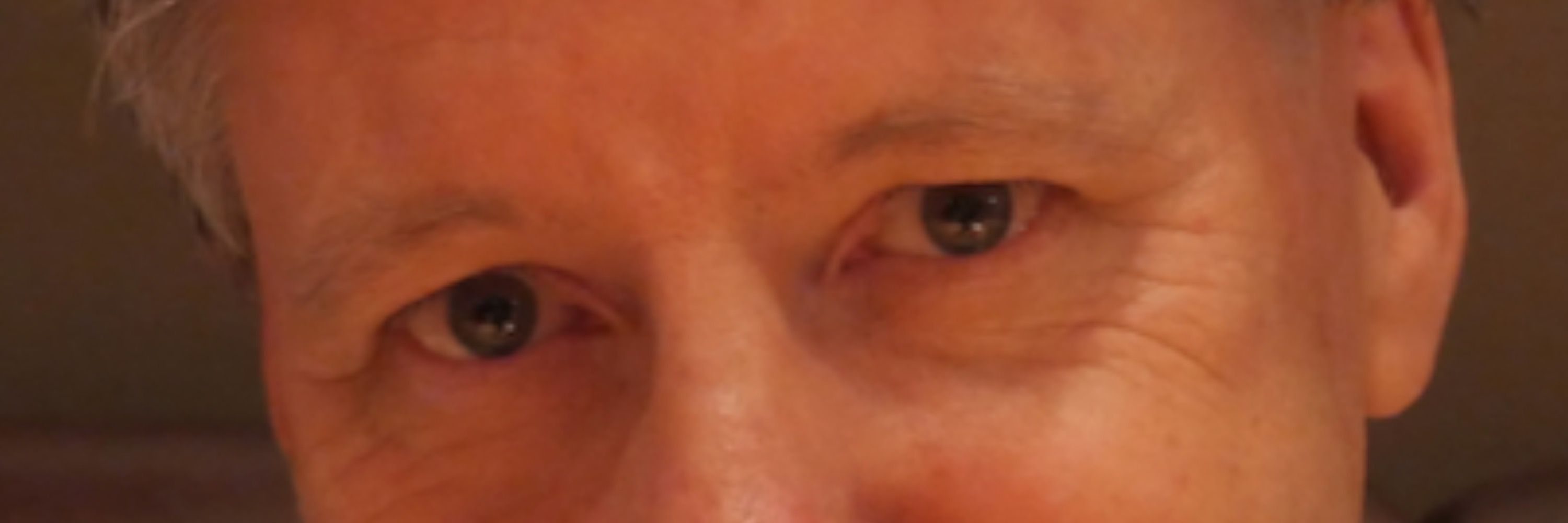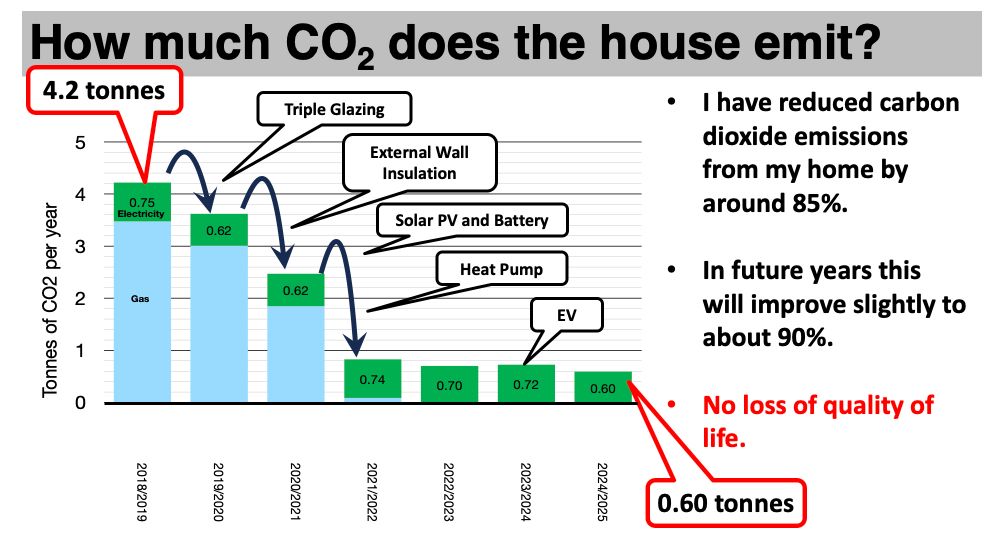
Michael de Podesta
@protons4b.bsky.social
Experimental physicist, professionally retired since April 2020, but still experimenting. I've been writing about science since 2008 at http://protonsforbreakfast.org
Very concerned about the Climate and sustainable living.
Very concerned about the Climate and sustainable living.
Yes, Elmhurst does need to acknowledge its own part in the poor use of EPCs. Basically EPCs as deployed now are not very accurate - because the basic task is not very simple.
Elmhurst are obsessed with process, but the process itself has problems that Elmhurst need to address. M
Elmhurst are obsessed with process, but the process itself has problems that Elmhurst need to address. M
November 10, 2025 at 5:10 PM
Yes, Elmhurst does need to acknowledge its own part in the poor use of EPCs. Basically EPCs as deployed now are not very accurate - because the basic task is not very simple.
Elmhurst are obsessed with process, but the process itself has problems that Elmhurst need to address. M
Elmhurst are obsessed with process, but the process itself has problems that Elmhurst need to address. M
I used chromatography a couple of times while I worked at NPL, and what I learned is that being even semi-quantitative is quite hard.
I've got a few more spectrometer experiments to try first, and then maybe I'll think about something more complicated!
All the best
Michael
I've got a few more spectrometer experiments to try first, and then maybe I'll think about something more complicated!
All the best
Michael
November 6, 2025 at 10:36 AM
I used chromatography a couple of times while I worked at NPL, and what I learned is that being even semi-quantitative is quite hard.
I've got a few more spectrometer experiments to try first, and then maybe I'll think about something more complicated!
All the best
Michael
I've got a few more spectrometer experiments to try first, and then maybe I'll think about something more complicated!
All the best
Michael
The spectrometer is incredible. There is so much physics to do - and so little time!
November 5, 2025 at 11:16 AM
The spectrometer is incredible. There is so much physics to do - and so little time!
I looked at that document but I need to read it again. The condensation efficiency specification makes sense, but I could not understand the energy efficiency specification at all.
It didn't seem to mention the latent heat of water anywhere? That's nuts!
I will read it again this morning
It didn't seem to mention the latent heat of water anywhere? That's nuts!
I will read it again this morning
October 6, 2025 at 10:16 AM
I looked at that document but I need to read it again. The condensation efficiency specification makes sense, but I could not understand the energy efficiency specification at all.
It didn't seem to mention the latent heat of water anywhere? That's nuts!
I will read it again this morning
It didn't seem to mention the latent heat of water anywhere? That's nuts!
I will read it again this morning
Yes. In Experiment#2 the clothes weighed 7 grams less at the end than at the beginning. I am pretty sure that was due to entrained moisture - or different levels of dryness.
October 6, 2025 at 10:14 AM
Yes. In Experiment#2 the clothes weighed 7 grams less at the end than at the beginning. I am pretty sure that was due to entrained moisture - or different levels of dryness.
That's interesting too! I may need to develop my measurement protocol!
October 5, 2025 at 9:59 PM
That's interesting too! I may need to develop my measurement protocol!
@wiilp.bsky.social Oh! Thanks for this information. I will attempt to process it all and get back to you!
October 5, 2025 at 9:57 PM
@wiilp.bsky.social Oh! Thanks for this information. I will attempt to process it all and get back to you!
Wherever you go... there you are.
October 5, 2025 at 5:48 PM
Wherever you go... there you are.
soundcloud.com/dylanesque19...
You are right. Here's a song I imagined singing in a few years time, but it already makes sense now.
"I long for the long rainy summers
I used to know in my youth
Long cold rainy summers
I wish you could know them too."
You are right. Here's a song I imagined singing in a few years time, but it already makes sense now.
"I long for the long rainy summers
I used to know in my youth
Long cold rainy summers
I wish you could know them too."

September 19, 2025 at 10:43 AM
soundcloud.com/dylanesque19...
You are right. Here's a song I imagined singing in a few years time, but it already makes sense now.
"I long for the long rainy summers
I used to know in my youth
Long cold rainy summers
I wish you could know them too."
You are right. Here's a song I imagined singing in a few years time, but it already makes sense now.
"I long for the long rainy summers
I used to know in my youth
Long cold rainy summers
I wish you could know them too."
Now correctly rendered.


September 14, 2025 at 3:51 PM
Now correctly rendered.
Here's my month by month costs for the last 4 years and the annual carbon dioxide emissions. The yellow shows the avoided emissions from exported electricity.


September 14, 2025 at 3:49 PM
Here's my month by month costs for the last 4 years and the annual carbon dioxide emissions. The yellow shows the avoided emissions from exported electricity.
Typo: "Monopiles": very confusing!
September 12, 2025 at 1:00 PM
Typo: "Monopiles": very confusing!
So at higher temperatures one would need to vacuum insulate using multiple reflector layers.
Best wishes
Michael
Best wishes
Michael
September 4, 2025 at 9:33 AM
So at higher temperatures one would need to vacuum insulate using multiple reflector layers.
Best wishes
Michael
Best wishes
Michael
If I recall, I just used standard thermal conductivity figures - probably looked up from The Engineering Toolbox.
Thinking back to my working days 500 °C radiation is not that much of a problem in terms of radiative losses. But as one approaches 1000 °C materials like alumina become translucent.
Thinking back to my working days 500 °C radiation is not that much of a problem in terms of radiative losses. But as one approaches 1000 °C materials like alumina become translucent.
September 4, 2025 at 9:32 AM
If I recall, I just used standard thermal conductivity figures - probably looked up from The Engineering Toolbox.
Thinking back to my working days 500 °C radiation is not that much of a problem in terms of radiative losses. But as one approaches 1000 °C materials like alumina become translucent.
Thinking back to my working days 500 °C radiation is not that much of a problem in terms of radiative losses. But as one approaches 1000 °C materials like alumina become translucent.

